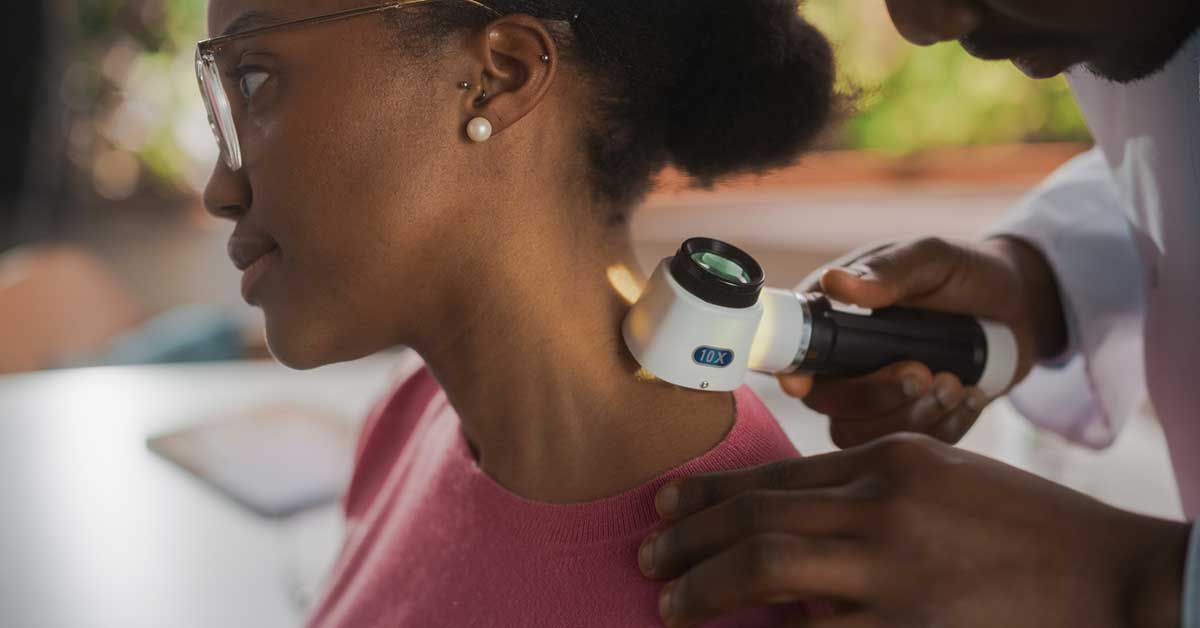Signs of Skin Cancer in Freckles and Birthmarks
What Your Skin Can Tell You About Cancer Risks
Your birthmark might be more than just a unique mark on your skin—it could be signaling potential health risks, including an increased likelihood of developing skin cancer. While most birthmarks are harmless, some may change over time, offering subtle clues about underlying issues. By learning to recognize these changes, you can take early action and potentially prevent serious health problems. In this article, we’ll explore how any changes to your skin, including to birthmarks, might be early signs of skin cancer, and what to look for to stay on top of your health.

Hidden Messages in Your Skin
Your skin constantly evolves, and the development of birthmarks and moles is part of that journey. Birthmarks appear at birth or shortly after and are usually harmless. They range from small pigmented spots to vascular patches like port-wine stains. However, certain birthmarks, such as congenital melanocytic nevi (CMN), can increase the risk of skin cancer if they change over time.
Moles develop over time and require closer attention. Most moles are harmless. However, some moles, known as atypical moles, can indicate melanoma. Melanoma is the most dangerous type of skin cancer.
Genetics, Skin Type and Skin Tone Matter
Genetics, skin type and skin tone play a crucial role in your skin’s vulnerability to melanoma skin cancer. Some people inherit a tendency to develop more moles or birthmarks, which can slightly increase the risk of skin cancer—especially if the moles are atypical. Fair skin, in particular, is more susceptible because it produces less melanin, the pigment that helps protect the skin from harmful UV rays caused by sun exposure.
If you have a family history of melanoma or other common types of skin cancer, you should be extra vigilant, as genetic factors can make you more likely to develop abnormal moles. People with lighter skin colors or lighter eye and hair colors are at a higher risk of skin cancer, as they tend to burn more easily under sun exposure.
What Causes Moles to Change?
Moles are clusters of pigmented skin cells, and while most stay harmless, certain factors can trigger changes that may indicate a problem. Prolonged sun exposure or tanning bed use can damage DNA in skin cells, including blood vessels, increasing the risk of mutations that could lead to melanoma skin cancer. Family history also plays a role—if skin cancer runs in your family, your moles might be more prone to change. Hormonal shifts during pregnancy, puberty or aging can also cause moles to darken, grow larger or develop irregular edges.
Freckles and Birthmarks: What to Watch
Freckles and birthmarks are typically harmless, but some types require closer attention. Freckles darken with sun exposure and suggest heightened sensitivity to UV rays but are not usually a direct risk. Birthmarks, however, can vary.
Some, like port-wine stains and café-au-lait spots, are purely cosmetic, while others, such as congenital melanocytic nevi (CMN), could be at higher risk of becoming melanoma skin cancer. Large or irregular CMNs should be monitored closely, especially if they start changing in shape, color or texture. Any changes could signal the development of cancer cells.
Contact Us
What’s Your Skin Trying to Tell You?
Itchy Moles
An itchy mole might seem like a minor nuisance, but it can sometimes signal something more serious. If a mole starts to itch, bleed or feel painful, it could be undergoing changes in its cells. Though irritation from clothing or minor trauma could be the cause, persistent discomfort—especially if it’s accompanied by changes in size, color or texture—should be evaluated by a dermatologist. These symptoms may indicate melanoma skin cancer, the deadliest form of skin cancer.
So, does skin cancer hurt? Yes, sometimes it can, particularly when it’s advanced and the cancer cells have spread. But it’s important to remember that skin cancer doesn’t always cause itching or pain, and that a non-painful skin change can also signal cancer.
Irregular Growth
A mole that suddenly enlarges, darkens or changes shape is one of the most serious signs of skin cancer. Healthy moles typically stay stable, so any rapid change—especially if the mole becomes asymmetrical, develops uneven borders or shows multiple colors—requires immediate attention. Dermatologists use the ABCDE rule (Asymmetry, Border irregularity, Color variation, Diameter over 6mm, and Evolution) to assess potential risks. If your mole meets any of these criteria, schedule an appointment with a dermatologist right away.
The “Sunburn Effect”
New freckles or moles that appear after sun exposure might seem harmless, but not all of them are. Excessive sun exposure can trigger changes in your skin’s pigment, and some of these new spots could indicate early damage that raises your risk of skin cancer. People who didn’t have many moles before but develop them after frequent sunburns should be especially cautious. The appearance of new moles is your skin’s way of signaling damage.
Any new or quickly appearing moles should be examined by a dermatologist to rule out early skin cancer risks. Prevention is key: Using sunscreen, wearing protective clothing and avoiding tanning beds can help reduce your long-term risk.
What to Do If You Notice Changes
Regular self-checks are essential for catching skin changes early. Many skin cancers can be treated successfully if caught early. Examine your skin at least once a month, using both a full-length mirror and a handheld mirror to check hard-to-see areas of skin like your back and scalp.
It helps to take clear photos of any moles or spots you want to monitor so you can compare them over time. Look out for new growths; changes in the size, shape or color of existing lesions; and any unusual sensations, like itching or bleeding. Keeping track of these changes will make it easier for you to report them to your dermatologist and get a thorough professional assessment when needed.
By staying alert and knowing what to watch for, you can empower yourself to detect cancer early and take steps to protect your health. And if you’re facing a cancer diagnosis, we want to help. Fill out the form to speak with our experts to learn more about our cancer treatment plans.





Comments